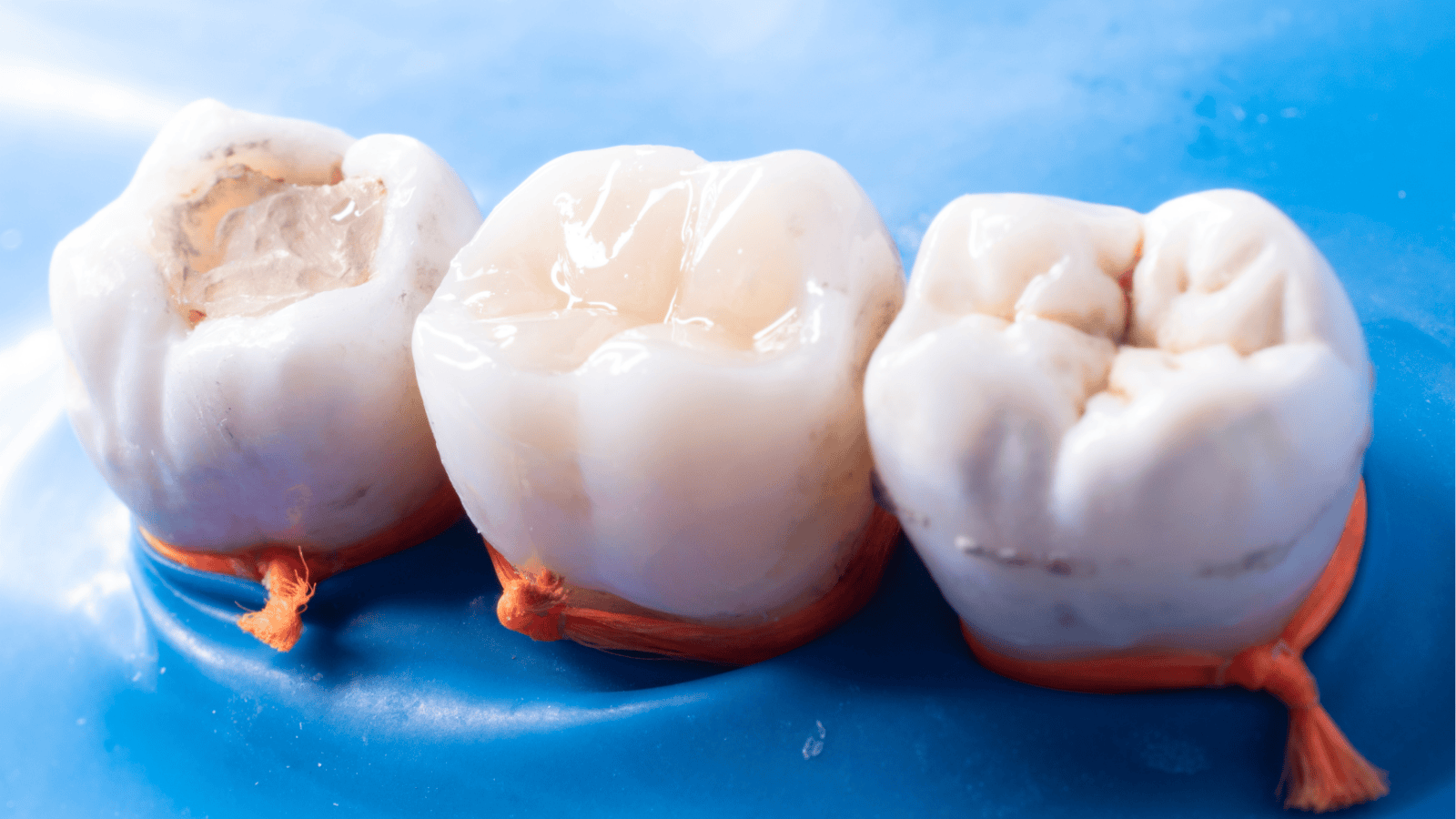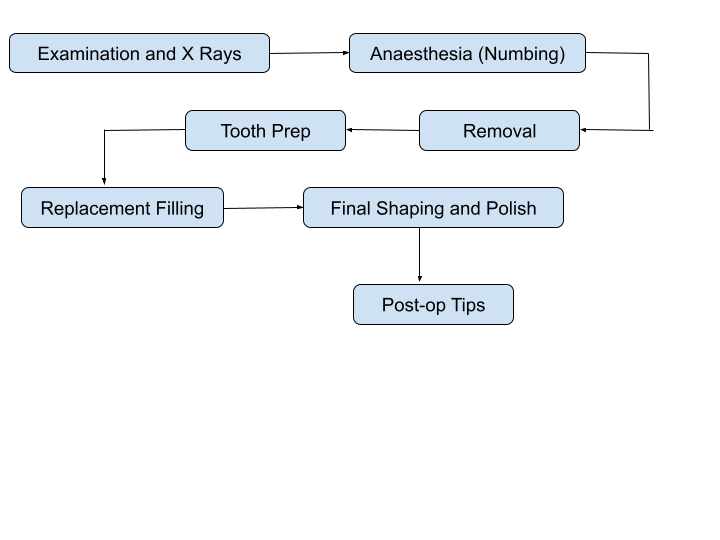Ever wondered why that tooth filling you had a few years ago suddenly feels a bit off? Maybe it’s gotten sensitive, or you spot a little crack. Most folks don’t think about fillings until something goes wrong. But surprisingly, every filling has a “lifespan.” Whether it’s silver amalgam or tooth‐colored composite, one day you may need a replacement. That’s what we are jumping into: why and when that filling might finally need an upgrade. It’s more common than you think. In this post, we will walk you through the typical life cycle of a tooth filling: when it’s installed, how long it usually lasts, signs of wear, and the ideal time to replace it. Then we will cover options and how your dentist decides.

When Does a Filling Need Replacing?
You will often hear that fillings last anywhere from 5 to 15 years, depending on the material and how you take care of your teeth.
Amalgam (silver) fillings might last up to 10–15 years, while composite (tooth‑colored) fillings usually last 5–7 years on average.
But it’s not just about years, what matters more is how the filling is holding up: any cracks, leaks, rough edges, or sensitivity signals that something’s up. If that’s happening, it might be time to get it checked or replaced.
Understanding the Life Cycle of a Filling
Just like anything else in your body, a filling goes through stages. From day one to a decade later, here’s what happens during the life cycle of a tooth filling.
Getting That Filling In Place
When a cavity shows up during a check‑up, your dentist cleans out the decay. Then they choose a filling material, perhaps amalgam for durability, composite for aesthetics, or even ceramic/resin for more extensive repairs.
The cleaned tooth is disinfected, prepped, and the material goes in, shaped to fit. You are probably numb through this, so it’s painless. After it hardens or sets, you are good to go.
Early Stage
In the beginning, everything feels fine. You might notice temporary sensitivity to hot or cold foods, which might tingle, but that fades. The seal between filling and tooth is tight, so it’s doing its job protecting the inner pulp.
This period is usually uneventful, unless there’s an issue with bite alignment. If things didn’t feel right early on, that could be your first clue.
Middle Stage
This is “middle life.” If you chew chewy foods, grind your teeth (bruxism), or brush aggressively, wear and tear starts. Composite may stain or chip; amalgam may show small lines or a worn surface.
But most fillings in this range still function well. Regular dental check‑ups during this phase help catch minor issues before they become major.
Later Stage
Now we are into the threshold where many fillings begin to degrade. Composite fillings may shrink with temperature changes, allowing bacteria to sneak in and cause decay beneath. Amalgam can corrode or crack.
It’s not merely about the calendar. It’s how the filling looks, feels, and whether you feel any discomfort.
Signs You Should Replace A Filling
So, how do you know when it’s time to replace a filling? Your mouth has a few clever ways of letting you know what to watch for. Let’s go over the key signs.
Increased Sensitivity To Pain
If a filled tooth suddenly reacts to hot, cold, or sweets, or you get a dull ache when biting, that could mean your filling is leaking or the tooth underneath is decaying again.
Don’t wait until the pain worsens. Early treatment can save both your tooth and your wallet.
Visible Damage On The Filling
Cracks, chips, rough surfaces, or even gaps between the filling and the tooth are red flags. Even a small line or chip may let bacteria sneak in.
Check it in the mirror occasionally; if something looks off, it probably is.
Discoloration Or Staining Around The Edges
Sometimes the edges of composite fillings darken or show a narrow line where decay may hide. This kind of staining isn’t just cosmetic. It could mean your filling is failing.
Loose Or Falling-Out Filling
Rare, but if a filling breaks or pops out entirely, it needs immediate replacement. Leaving it open invites food, bacteria, and trouble into the cavity space.
Bite Feeling Off Or High Spots
If your bite doesn’t feel natural, maybe it’s “high” when you close your mouth, or if sharp edges catch your tongue, that indicates wear or misalignment.
Even slight changes in your bite can cause headaches or jaw discomfort over time.
How Dentists Decide To Replace A Filling
This part can feel a bit subjective, but dentists usually rely on a few key steps:
- Visual inspection for cracks, stains, and gaps is obvious.
- A dentist gently scrapes around the edges to detect softness or gaps.
- X‑rays reveal decay forming beneath a filling or between teeth.
- If the patient says, “This tooth hurts when I chew,” that’s significant.
If any of these raise concern, your dentist may recommend replacing the filling, even if you don’t feel pain yet.
Materials and Replacement Options
Once a filling is deemed replaceable, what are your options?
- You can replace an old amalgam with a new amalgam or a composite with a composite. It’s straightforward and usually covered by basic insurance.
- Many people switch from silver to tooth‑colored composite, especially for front or visible areas. Composite bonds to the tooth and offers a more natural look.
- If the cavity has grown or if a lot of filling material has chipped away, your dentist might recommend an inlay or onlay. For even more serious structural loss, a crown (cap) might be the best choice.
- Sometimes decay has penetrated deeply, or a crack has reached the nerve. That might mean a root canal treatment before placing a new filling or crown.
The Replacement Process
Let’s walk through what happens when it’s time to get a filling replaced:

If a crown or inlay is needed, that process may involve impressions, a temporary restoration, and a follow‑up visit for placement.
Tips To Extend Filling Life
Want your fillings to last as long as possible? A few small habits can make a big difference in keeping them strong and problem-free.
- Keeps decay away from those margins and stops bacteria buildup.
- Fluoride helps strengthen the enamel around the filling.
- Ice, popcorn kernels, and pens. You know who you are. Those can be chip fillings.
- If you grind your teeth at night, this can protect fillings and teeth from harm.
- A check‑up every six months means small wear turns into a fixable snag, not a full refill. X‑rays can catch decay under fillings before you notice it.
Conclusion
So there you have it: tooth fillings have a life cycle from installation, through wear, to eventual replacement. Amalgam can last a decade or more, composites slightly less, but it’s not just age that matters. It’s how your mouth treats that material. Cracks, sensitivity, staining, or loose edges? That’s your body’s way of saying, “check me out.” A timely replacement can save you from bigger, costlier problems later on. Dental care isn’t glamorous, but it’s one of the best investments you will ever make, keeping your smile strong and healthy. If you are sensing an issue or just haven’t had a dental check‑up recently, schedule a visit with Popup Smile. We are great at spotting trouble early and helping you stay ahead of problems. Your teeth will thank you!
FAQs
Can a filled tooth become reinfected after a root canal and a new filling?
Yes, if a crown or filling fails to seal properly, bacteria can re‑enter the canal space. That’s why good restoration technique and regular check‑ups are key after a root canal.
Are there any new durable filling materials beyond composite and amalgam?
Yes, some labs offer milled ceramic inlays/onlays or gold restorations using CAD/CAM. These can outlast traditional fillings by several years, especially in back teeth with heavy bite loads.
Is it possible to monitor a filling without immediately replacing it?
If your dentist observes minor wear or marginal staining, they may choose to monitor it with periodic exams and x‑rays. Intervention only becomes necessary if symptoms appear or decay progresses.






